Steinberg’s Cubase Pro 13: The old master shows how it’s done
With an unbroken thread reaching back over 34 years to its inaugural release, Cubase may be no spring chicken, but it isn’t ready to shuffle off to its dotage just yet
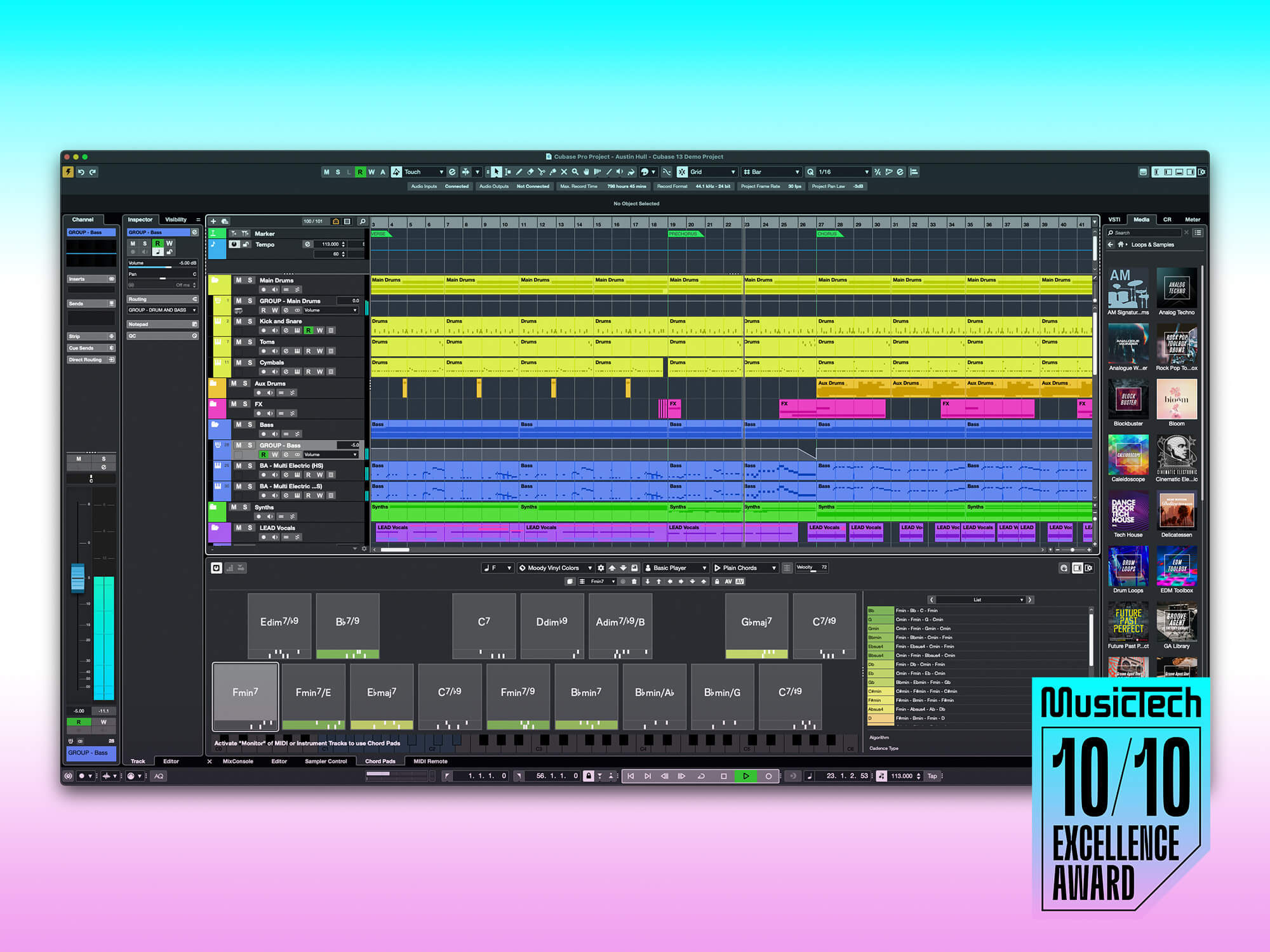
Cubase 13. Image: MusicTech
Review Overview
Our rating
10
Our verdict
⊕ Modify track's mix settings from the Project window with Channel sidebar
⊕ Crisp new mixer design and Strip popups for less clutter and distraction
⊕ New analogue style EQ and dynamics processors
⊕ Contemporary vocal processing made easy with VocalChain
⊕ Complete orchestra included
⊖ Rearranging channel sections does not reorder the signal routing
⊖ Your writer, who remembers first-hand the 1989 launch of Cubase, now feels old
£497 (upgrades from £85)
Also available in Artist edition (£282 / upgrades from £68) and Elements edition (£85 / upgrades from £25)
steinberg.net
Alright, let’s get this out of the way: the number 13 has a lot of folklore attached to it, and you may expect us to joke about this when discussing the 13th edition of a product – riffs on “unlucky for some”, and any other number 13 references we can think of. But here, that ain’t gonna work.
There’s nothing woeful or portentous in Steinberg’s Cubase 13; it’s just another stellar update to one of the longest-serving software titles in existence.
Baker’s dozen Mixer overhaul
The most obvious change in Cubase 13 is the Mixer window. This has had a complete graphical overhaul to give it a crisp, less cluttered appearance, and to bring improvements to the mixing workflow.
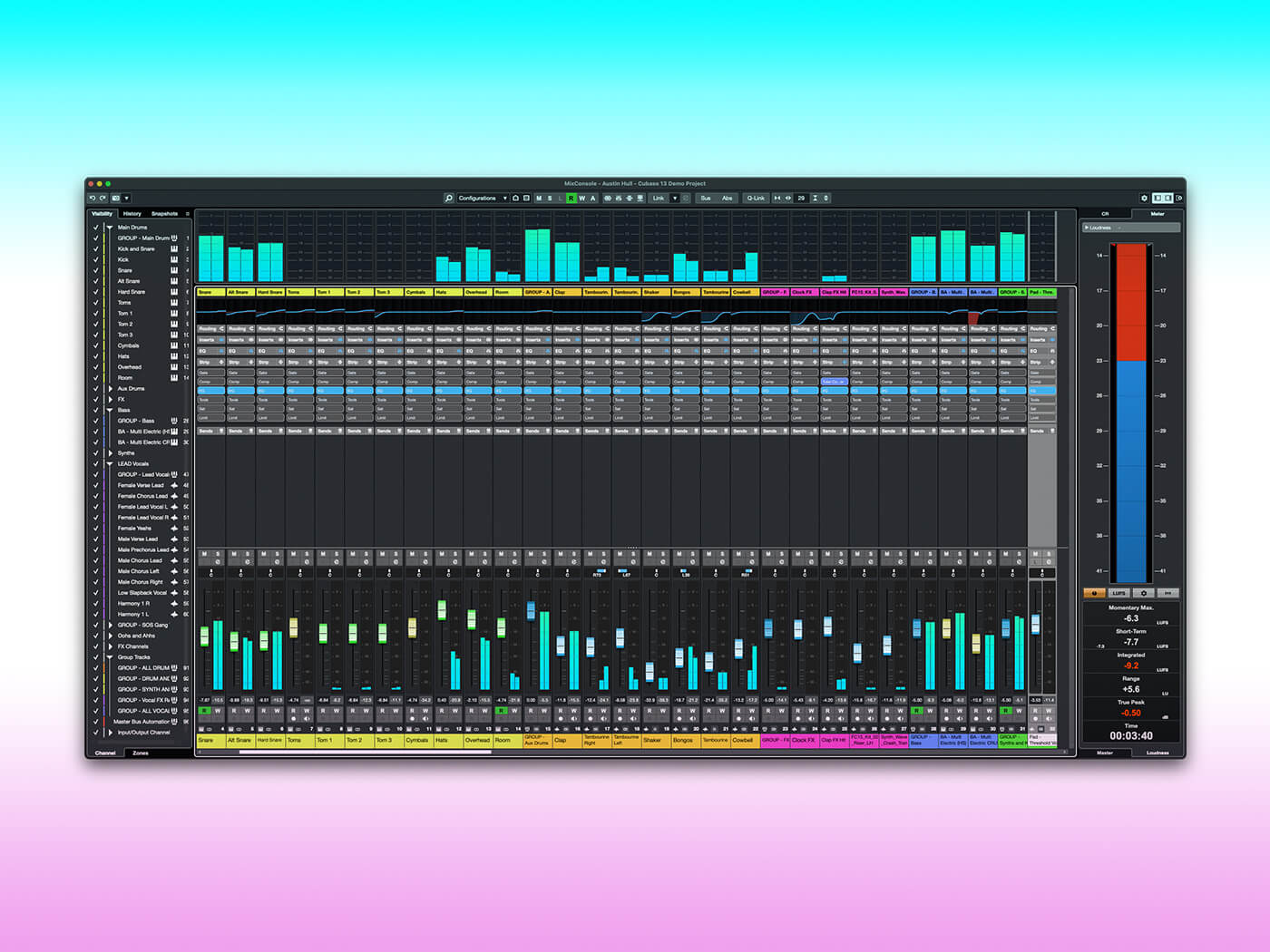
Channel strip sections – inserts, sends, EQs and the like – can be hidden or shown as before, but now their ordering can be adjusted too. This doesn’t impact the actual signal flow, which would have been a helpful feature, but it does let you customise things to best suit your way of working. Also, track name labels are now shown at the top of the strip as well as the bottom, and these new labels stay in place even when vertically scrolling the mixer view, making it much easier to navigate.
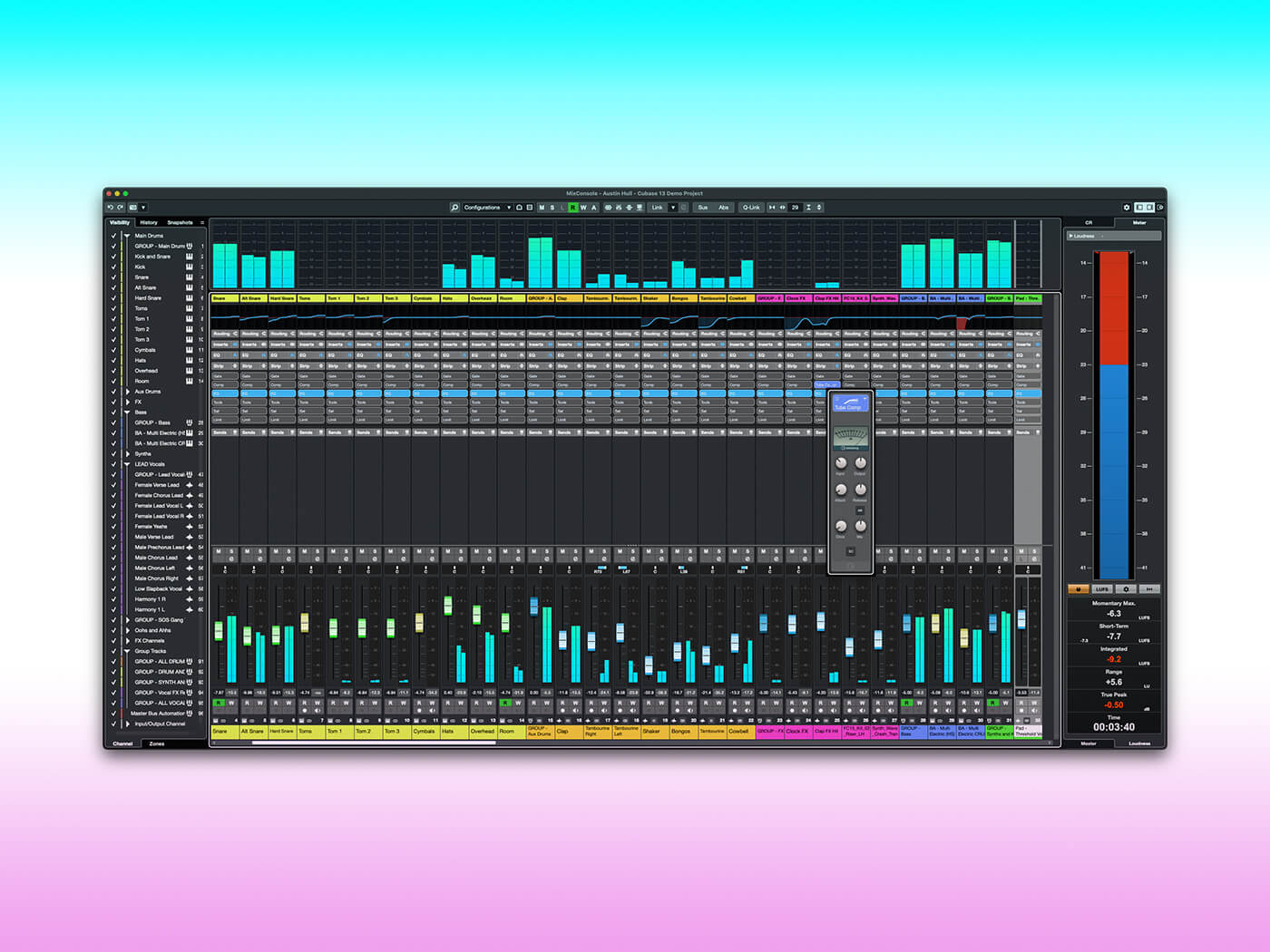
More significantly, the EQ curve popup window, which opens when clicking on a channel’s curve preview, now shows the actual controls as well as a draggable curve, and includes the low-cut and high-cut pre-filter controls, making for a much more useful panel. Similarly, the Strip processors (the standard set of processors built into each channel) now open in pop-ups rather than expanding their section across the entire mixer, reducing clutter and distraction.
The refreshed mixer design has also found its way into the main Project window in the form of a new Channel sidebar that can be opened to the left of the Left Zone sidebar. This does duplicate functionality that has long been available as sections within the Left Zone’s Inspector panel, but the Inspector can only show one such section at a time – inserts OR sends OR fader etc.
In contrast, the new Channel sidebar can show all of its sections simultaneously within a single view, and is a huge time- and focus-saver that brings Cubase into line with DAWs that already offer a similar feature.
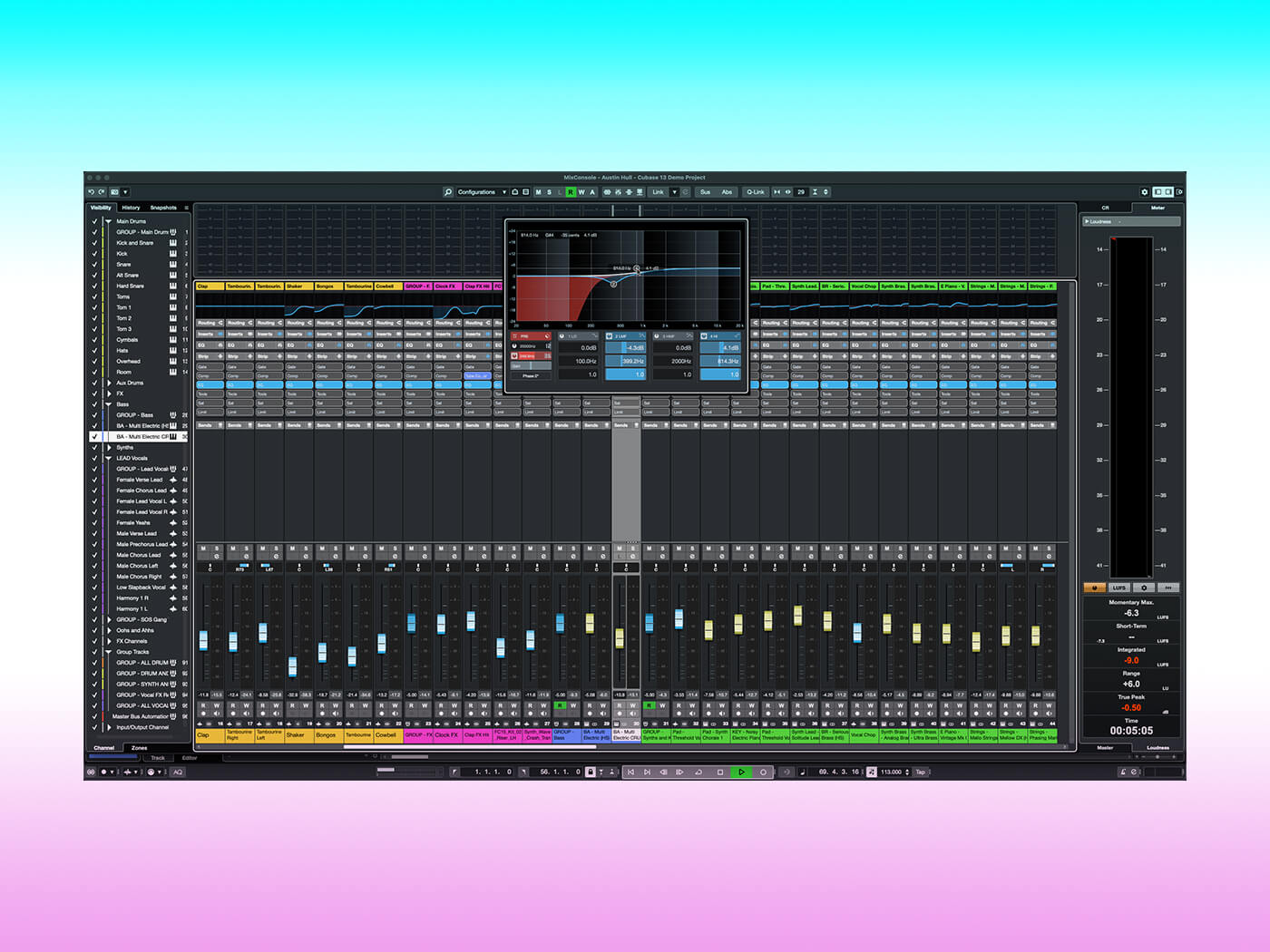
Friday The 13th Edited editors
The procedure for selecting and moving notes and events within the Key and Drum Editors has always had quirks that Cubase users have learned to work around. For example, ensuring you have selected all of the notes and events you are interested in can often involve a lot of scrolling and zooming – and even then you can miss things that lie above or below the main cluster of notes. Then, if the first note in your selection does not fall on a grid line, it becomes tricky to accurately maintain the relationship to the beat of the notes you are moving/copying.
Steinberg addresses these issues in Cubase 13 with new functionality for the Range Selection tool. Now, having defined a timespan, you can simply drag/copy it to a new time position, taking all the notes and events it encompasses along for the ride.
Everything within the range will be timed accurately with regards to the selection bounds, and you can choose whether or not to include controller data (which, incidentally, can now be manipulated by the Range tool in much the same way as track-level automation).
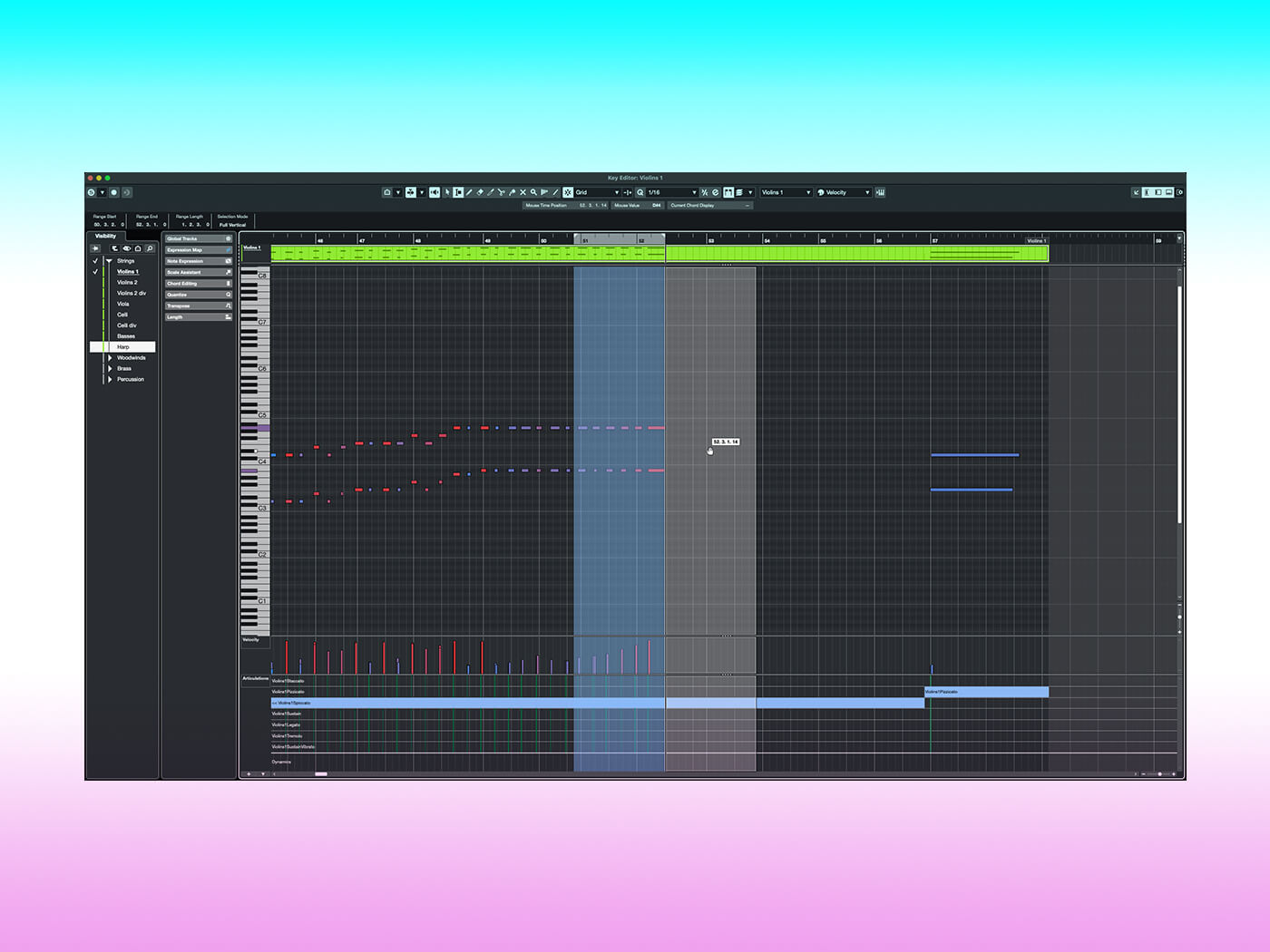
The workflow for dealing with multiple parts within an editor has been streamlined too. A new preview area sits atop the main editing grid showing the tracks and parts that are included in that editor’s view. Clicking a part in the preview activates that part in the editor itself – a far more elegant solution than the old method of clicking inactive notes in the hope they are within the part you want to edit.
Additionally, a new Visibility sidebar can be opened, allowing tracks – and the parts they contain – to be added and removed from the preview and thus the editor itself.
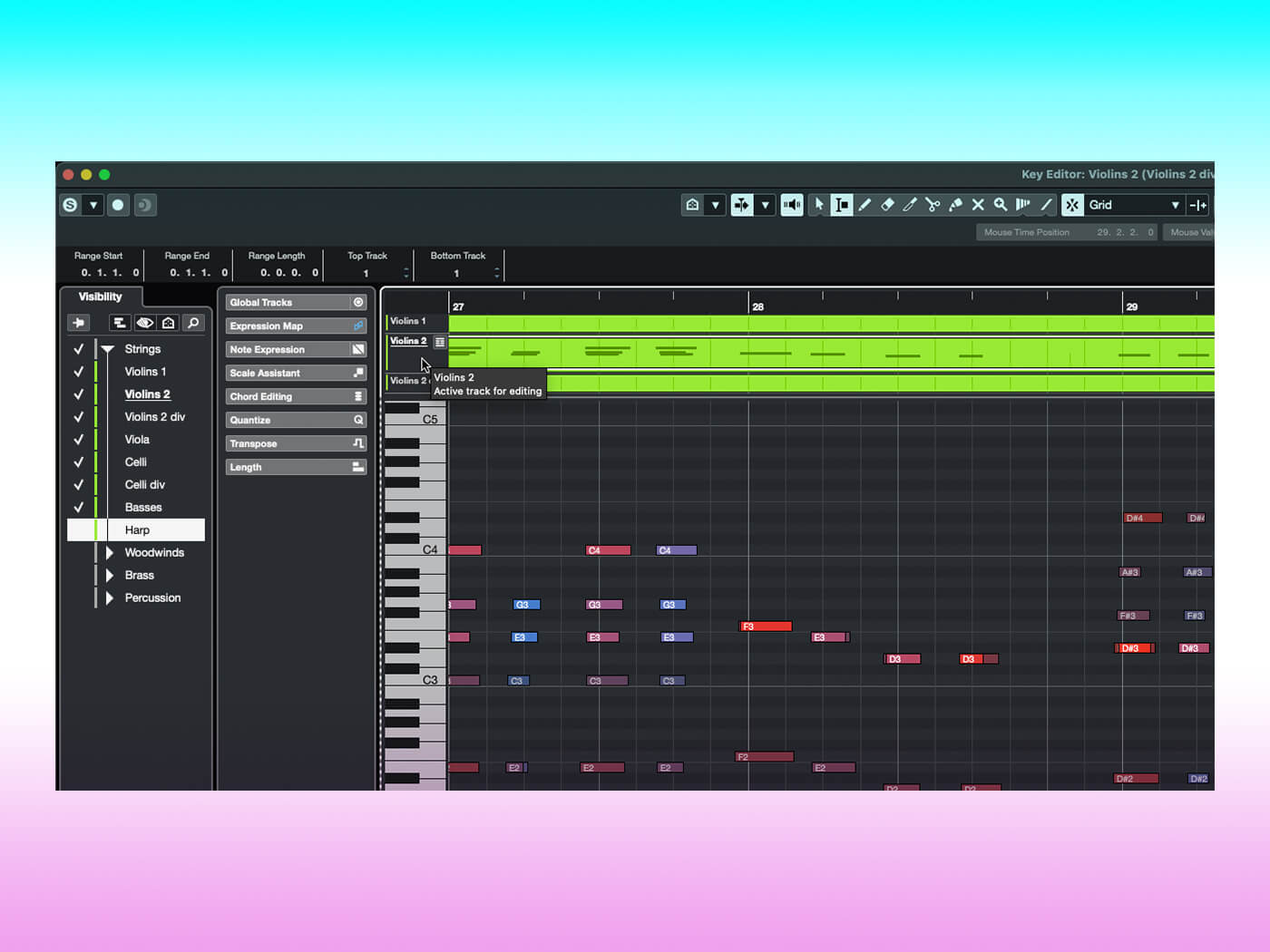
Signs of the zodiac Track changes
Chord tracks are a fabulous way to sketch and develop a song, and have received some attention in the Cubase 13 update. The overall method of assigning and configuring the chord pads, which was previously quite clumsy, has been streamlined into a single Lower Zone panel. Here, a new chord list has joined the Circle of Fifths and Chord Editor as a means of choosing and defining chords.
Like the pads themselves, the list colour-codes each chord to show the strength of its harmonic relationship to the currently active chord, making it simple to create and explore complex progressions.
Sampler tracks have also received updates, most notably with three new spectral time warp modes – one of which is dedicated to use on vocals – that deliver far cleaner time-stretching results than the existing Music and Solo modes. Additionally, pitch, filter and amplitude envelope generation have been given a creative boost with the ability to create complex shapes and patterns based on preset curves.
The 13th disciple New processors and sounds
As you may expect, Cubase’s bundle of professional plugins has been expanded. The most elaborate plugin to be added is VocalChain – a collection of 16 individual processors grouped together to form a vocal processing powerhouse.
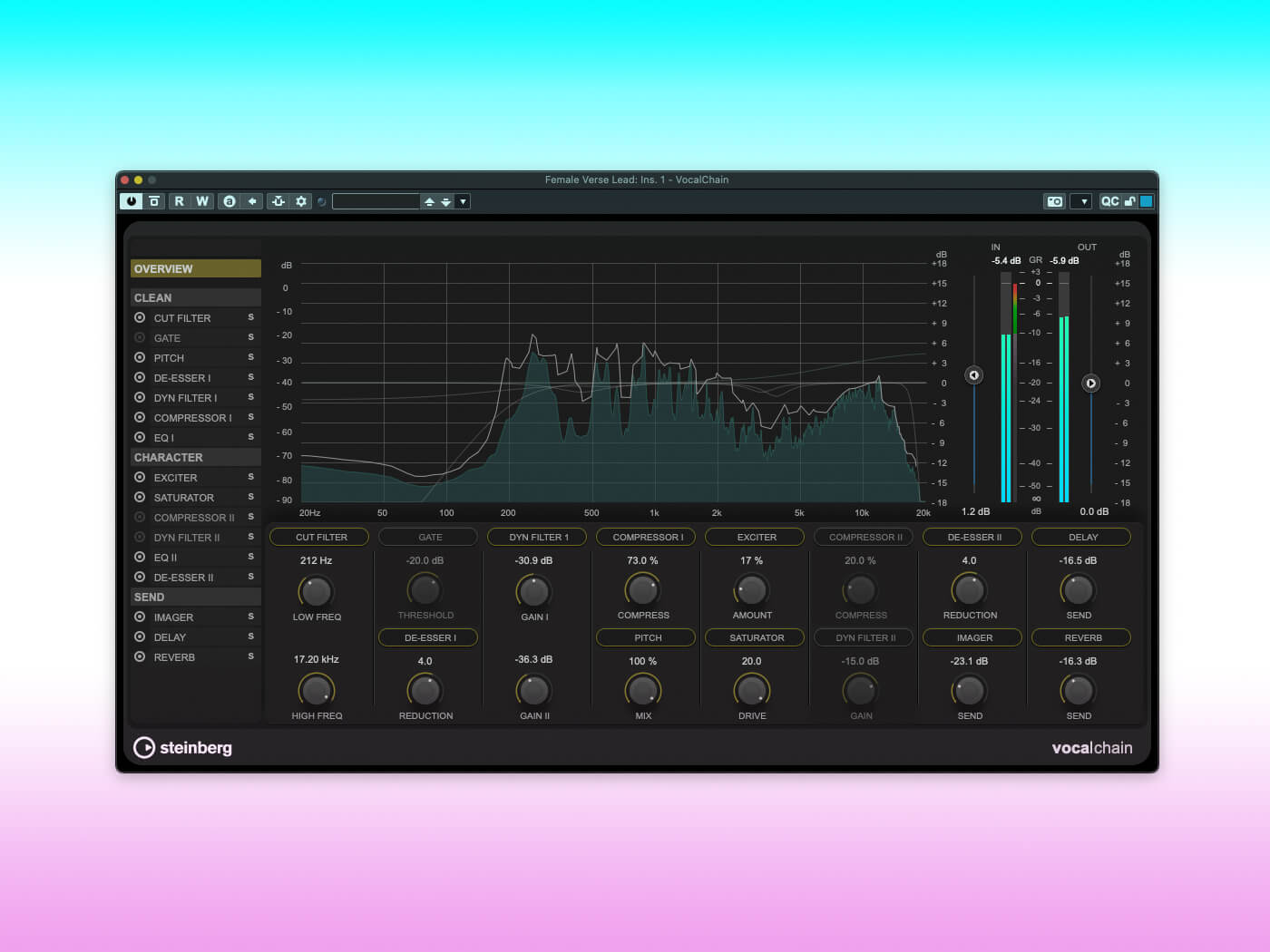
VocalChain organises its processors into three sections, each with an intended function. Clean includes gates, EQs, filters and the like for removing noise and crud from the signal. Character brings together processors that colour, enhance and control the sound – we’re talking compressors, saturators and so on. Meanwhile, Send is where the sonic embellishments of reverb and delay can be added, as well as a clever Imager processor to add stereo width to your mono vocal.
Another boon for vocalists – and indeed those of us who can’t sing – is the welcome return of Steinberg’s excellent Vocoder plugin. This was dropped from Cubase when it stopped supporting 32-bit plugins (around version 10 if we recall correctly), but now the plugin has been updated to 64-bit, it’s back. Nice.
Cubase has long had a strong choice of EQ options, with console-style parametric EQ on every channel, the super-detailed 8-band Frequency plugin, plus a couple of graphic EQ plugins. These have now been joined by EQ-P1A and EQ-M5, a pair of Pultec-style passive EQ plugins that bring analogue colour and character to Cubase’s EQ offering.
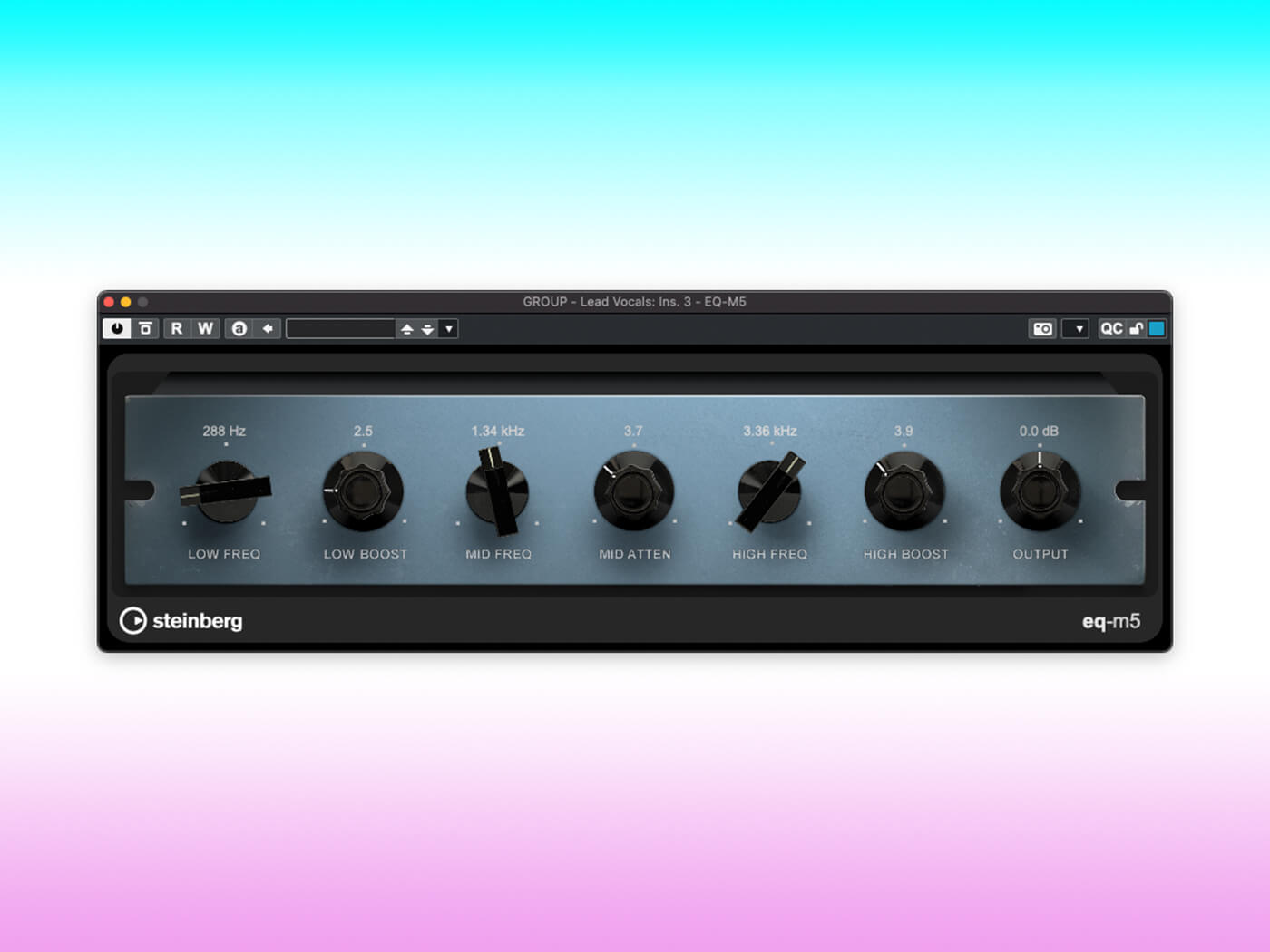
Similarly, over in the dynamics department, the new Black Valve compressor provides an emulation of a classic valve compressor. It isn’t clear what the source of inspiration for this compressor is, but it looks and sounds to us most like a Universal Audio LA-610, which combines the progressive compression characteristics and simple controls of an optical compressor with the tonal and harmonic colouration of a tube.
Whatever it is based on, Black Valve delivers classy, smooth-sounding compression that is particularly impressive on vocals, basses and acoustic guitars.
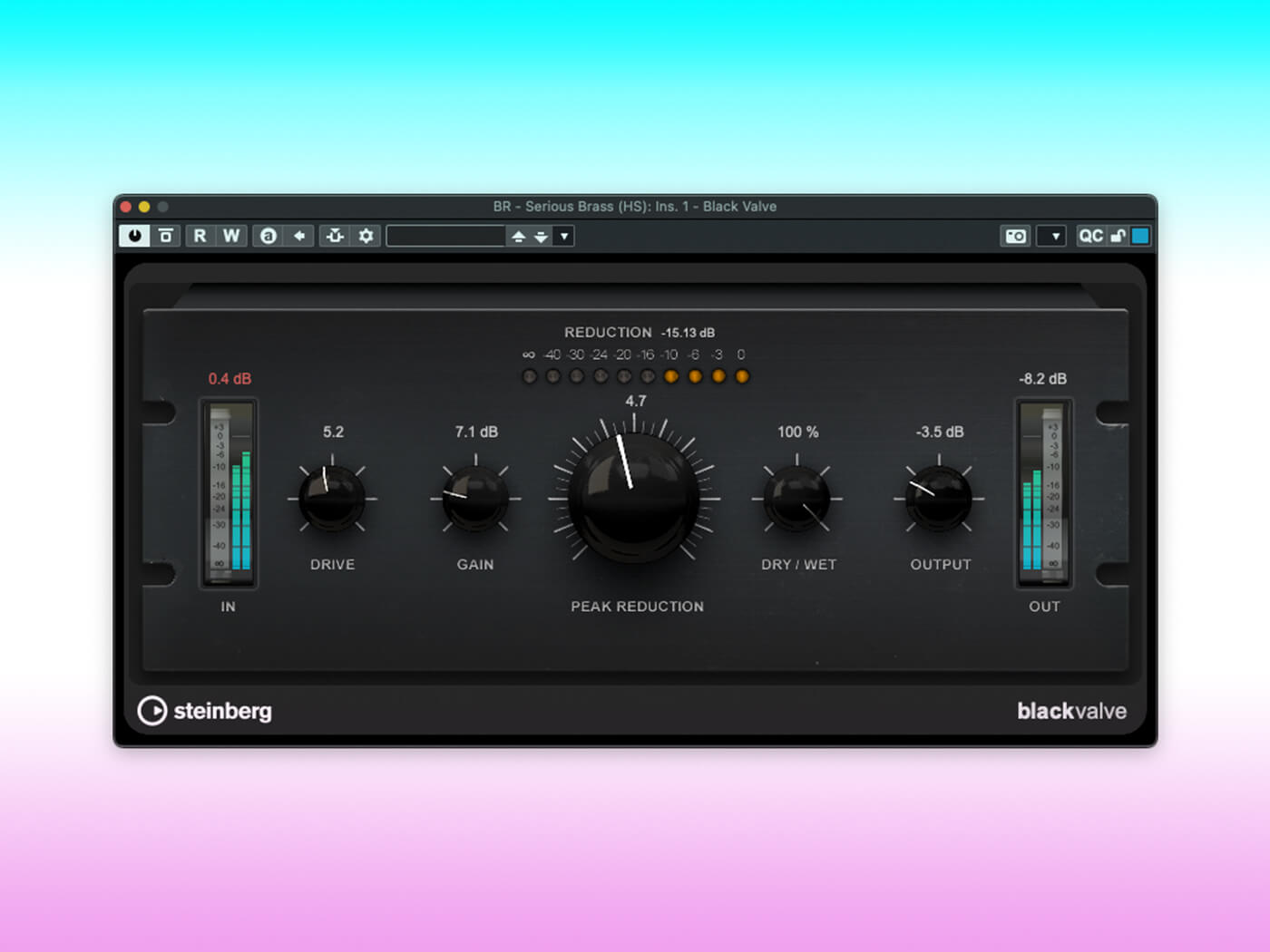
There are no new instrument plugins in Cubase 13, but what you do get is the Iconica Sketch instrument for HALion and HALion Sonic (Cubase of course comes with the HALion Sonic plugin). This provides a full orchestra of 34 different instruments and sections, with multiple articulations for each, and is ideal for composing orchestral scores or adding orchestral elements to songs.
As always, there is a whole raft of smaller tweaks and additions, such as the five new sample packs, the ability to export audio directly into an existing MP4 video file, replacing its soundtrack and avoiding the need to re-render the entire video project, and the long-needed ability to easily switch a track between stereo and mono mode.
Unlucky for some Lucky number 13
The stack of new features, workflow improvements and streamlining that Steinberg has delivered makes this a major update to its most venerable and long-lived product. The updates are very well conceived too, bringing the DAW up to date in areas it was starting to lag behind, tidying up areas that had become a bit clumsy or convoluted, and adding new tools and toys that make the creative process that bit easier and a lot more enjoyable.
It can’t be easy to keep finding ways to improve, hone and refresh a product that’s been around for as long as Cubase, yet Steinberg has done it again. So, while those young DAWs keep challenging, Cubase remains a top-tier choice.